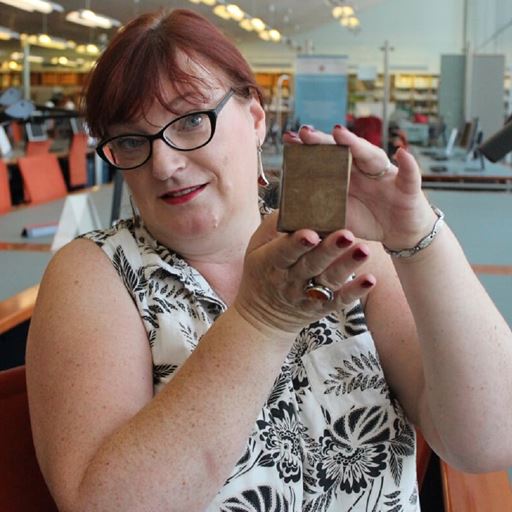Rare book gives new insight into Elizabeth Fry’s connections to Essex
-
Date
Thu 12 Sep 19

A rare first edition book, written and signed by renowned Victorian prison reformer Elizabeth Fry, has been brought to light in Essex – further proving her links to the county.
The tiny tome, the size of a matchbox, was written in 1831 and includes top tips on leading a better life with quotes, mainly taken from the bible, for every day of the year.
It was uncovered by University of Essex history student, Julie Miller, when she was on placement at the Essex Record Office. She had been tasked with going through a collection of Quaker documents, including letters, wills and deeds, contained in a tin box which had been deposited with the Record Office in 2013.
The 96-page book, Texts for every day in the year, principally practical & devotional, was in a leather pouch and has a dedication on the inside cover to Mary Carter.
“It turns out Mary Carter lived at Wentworth House in Maldon and her daughter, Mary Ann Barritt, was nursed by Elizabeth Fry. It’s a cracking little book and it seems Mary used it almost like a diary, as she had marked specific days with birthdays and anniversaries. Finding something so personal from one of the most renowned Quaker women, topped off a fantastic time at the Record Office.
“I was born and bred in Maldon and worked in local heritage in the town, so to find the building where Mary Carter lived is at the end of my road was an extraordinary co-incidence. I don’t think anyone in Maldon knew Elizabeth Fry had visited the town, so I am now going to do further research to find out the extent of her connections to the local Quaker community and the town in general,” said Julie.
Born in Norwich to a prominent Quaker family, Elizabeth Fry was the major driving force behind new legislation to improve conditions in Victorian prisons. She helped the homeless, establishing a night shelter in London, campaigned for the abolition of the slave trade and opened a training school for nurses. She featured on the British £5 note until 2016.
Edward Harris, from the Essex Record Office, said: “Elizabeth Fry was a social reformer and an important figure in British history. We know that she had connections to Essex. Her name is even inscribed in the Council Chamber at Essex County Council, alongside other famous sons and daughters in Essex.
“But through this book, we have evidence of a previously unknown connection, which is great because it opens up the possibility of further research into her connections with Maldon. There are hidden stories behind a lot of the material we have at the Record Office, and thanks to our links with the University, we are able to reveal those stories and communicate them to the general public.”
Julie, a mature student who decided to go to university after receiving a life-changing diagnosis of breast cancer, spent 12 weeks at the Record Office, as part of her MA history course. She is studying the life of 18th century Quaker and anti-slavery campaigner John Farmer, who lived in Colchester and Saffron Walden. Her blog about her placement is available online.
The first edition of the Elizabeth Fry book was privately published. It is not known how many were printed or how many have survived, so it is difficult to put a value on it, but to the Record Office it is priceless. It can be viewed at the Essex Record Office on Wharf Road, Chelmsford.



